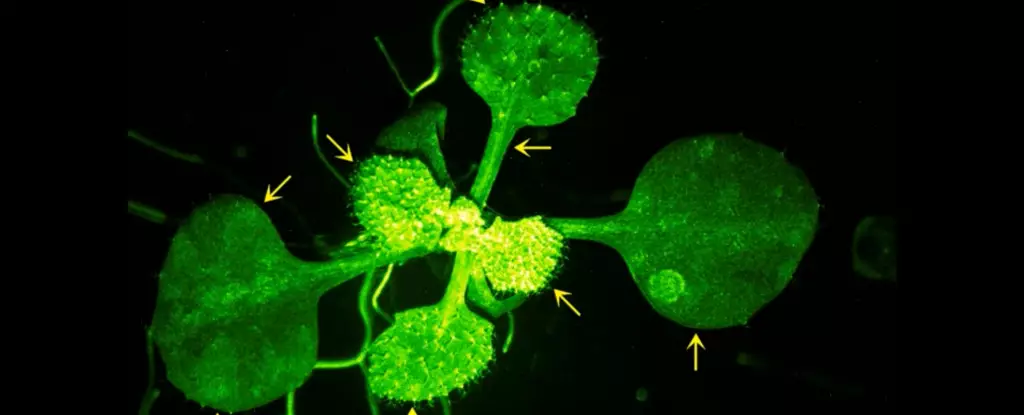Plants have a hidden world of communication that is imperceptible to the human eye. Airborne compounds surround plants, much like smells in the air, that serve as a means of communication and protection for these organisms. Scientists have been aware of these plant defenses since the 1980s, having detected them in a wide array of plant species. However, it was only recently that a team of Japanese researchers shed light on how plants receive and respond to these airborne alarms. This groundbreaking research filled a crucial gap in our understanding of how plants interact and protect themselves.
In a recent study conducted by molecular biologists at Saitama University in Japan, researchers used real-time imaging techniques to observe how plants react to danger cues emitted by injured and insect-riddled plants. By transferring compounds from damaged plants onto undamaged neighbors and using a fluorescence microscope to monitor the responses, the team was able to witness how plants communicate in the face of impending threats. The plants involved in the study were genetically modified to fluoresce green when calcium signaling was detected, a method commonly used in human cell communication studies.
The team focused on measuring calcium signals, a form of communication used by plant cells, to track how plants responded to the volatile compounds released upon injury. Through their analysis, the researchers identified specific compounds, such as Z-3-HAL and E-2-HAL, that induced calcium signals in the plants. By engineering plants with fluorescent sensors in different types of cells, such as guard, mesophyll, and epidermal cells, the team was able to pinpoint which cells responded first to the danger cues. Guard cells, responsible for regulating stomata, showed an immediate response to Z-3-HAL, followed by mesophyll cells, demonstrating a coordinated effort in plant communication and defense.
Stomata, small pores found on the surfaces of plant leaves, play a crucial role in plant defense mechanisms. When exposed to phytohormones that regulate stomata openings, the researchers observed a significant reduction in calcium signaling, suggesting that stomata act as the ‘nostrils’ of the plant. This finding underscores the importance of stomata in responding to environmental cues and protecting plants from potential threats.
The study conducted by the Japanese researchers provides valuable insights into the intricate world of plant communication and defense mechanisms. By uncovering how plants receive and respond to airborne alarms, the team has expanded our understanding of the complex interactions that take place in the plant kingdom. This research opens up new possibilities for further exploration into the fascinating world of plant signaling and adaptation.

Leave a Reply